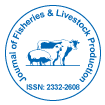Mitigating the Carbon Footprint of Animal Agriculture
Received Date: Feb 01, 2025 / Published Date: Feb 26, 2025
Abstract
Animal agriculture is a major contributor to greenhouse gas (GHG) emissions, particularly methane (CH₄), nitrous oxide (N₂O), and carbon dioxide (CO₂), which drive climate change. Mitigating the carbon footprint of livestock production requires a combination of innovative feeding strategies, manure management techniques, regenerative grazing practices, renewable energy integration, and carbon sequestration methods. Advances in feed additives, precision livestock farming, and waste-to-energy technologies have demonstrated potential in reducing emissions while maintaining productivity. Additionally, policy frameworks, carbon credit initiatives, and sustainable land management play a critical role in promoting low-emission livestock systems. This paper explores key mitigation strategies, challenges, and future opportunities for achieving a more sustainable and climate-resilient animal agriculture sector.
Citation: Nava N (2025) Mitigating the Carbon Footprint of Animal Agriculture. J Fisheries Livest Prod 13: 625. Doi: 10.4172/2332-2608.1000625
Copyright: © 2025 Nava N. This is an open-access article distributed under the terms of the Creative Commons Attribution License, which permits unrestricted use, distribution, and reproduction in any medium, provided the original author and source are credited.
Select your language of interest to view the total content in your interested language
Share This Article
Recommended Journals
Open Access Journals
Article Tools
Article Usage
- Total views: 906
- [From(publication date): 0-0 - Nov 14, 2025]
- Breakdown by view type
- HTML page views: 760
- PDF downloads: 146
